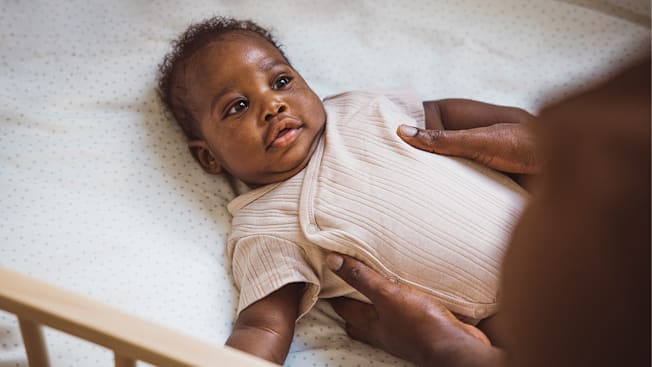SIDS and SUID Are on the Rise, With Highest Rates for Black Infants
Federal funding cuts for the NIH Safe to Sleep campaign could be especially devastating for Black families. Here’s what experts say can be done about the impact.

When Sarah Watkins brought her son home from the hospital in September after a two-week stay in the neonatal intensive care unit (NICU), she was nervous. “I was ready to be home, but I was also anxious to not have that extra assistance. That 24/7 support,” she says. Watkins, 38, of St. Louis, says one thing she felt confident about was the baby’s sleeping arrangements. She says the nurses played a video about safe infant sleeping practices and sent her home with tips and pamphlets with QR codes directing her to the National Institutes of Health’s Safe to Sleep resources online.
That website now warns visitors that a funding lapse may leave information outdated and services unavailable until government funding resumes.
Recent funding cuts and layoffs at the National Institute of Child Health and Human Development, which oversees the Safe to Sleep campaign, put decades of progress reducing the sleep-related infant death rate at stake. Sudden infant death syndrome, or SIDS, remains the leading cause of infant death for children 1 month to 1 year of age. Since 1994, the NICHD has worked to reduce the risk of sleep-related infant deaths in the U.S., through public education and awareness.
















